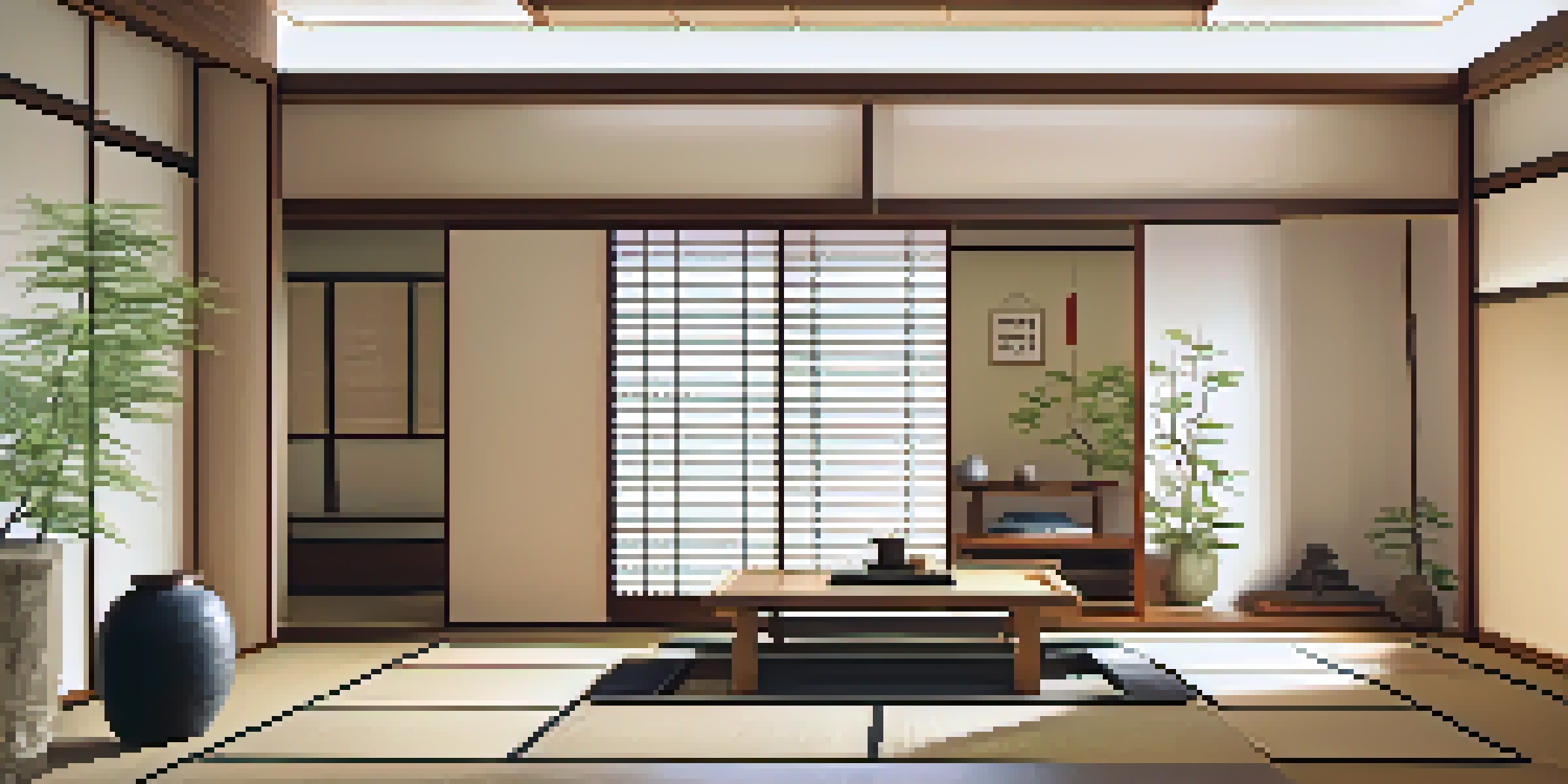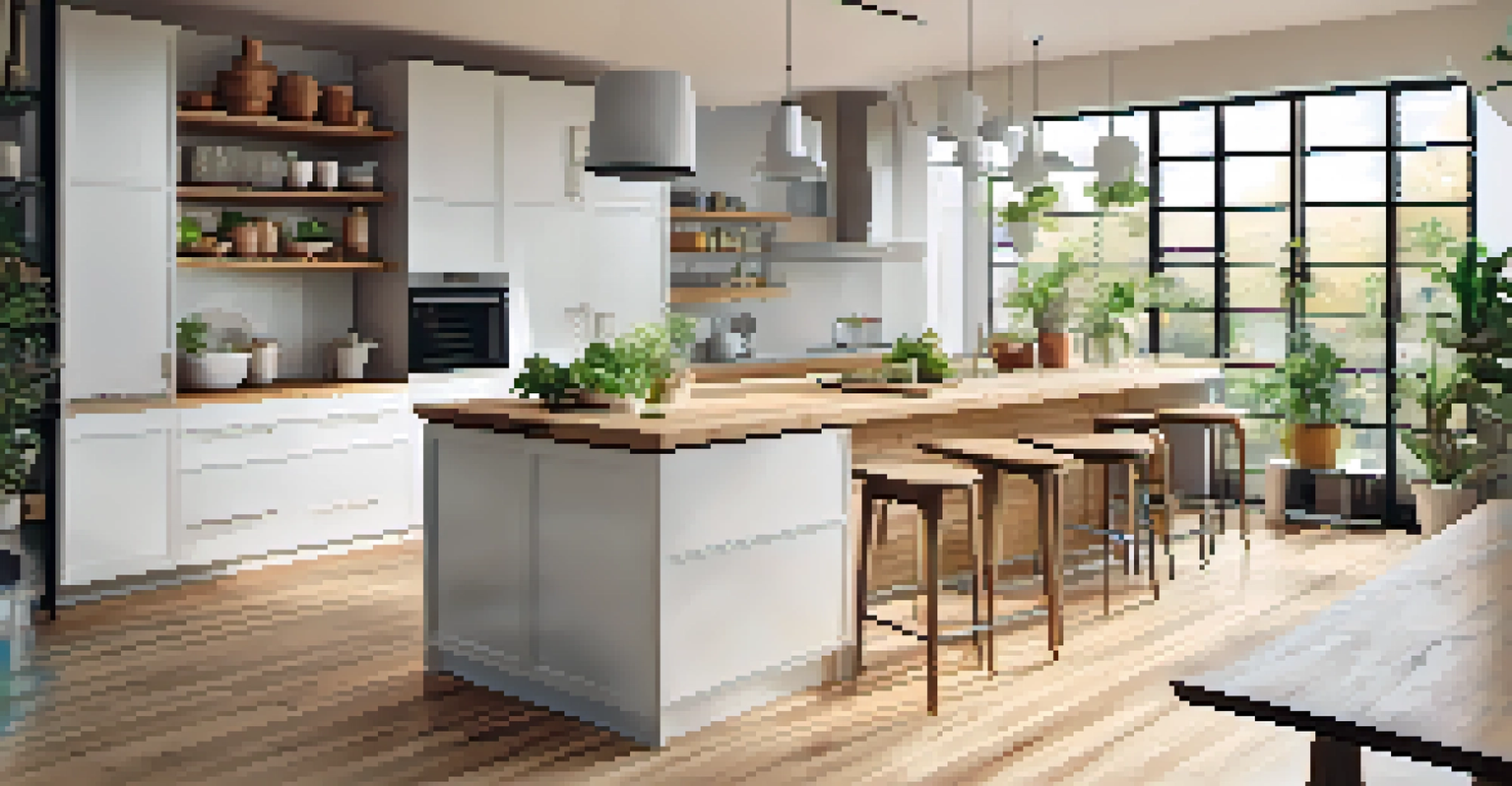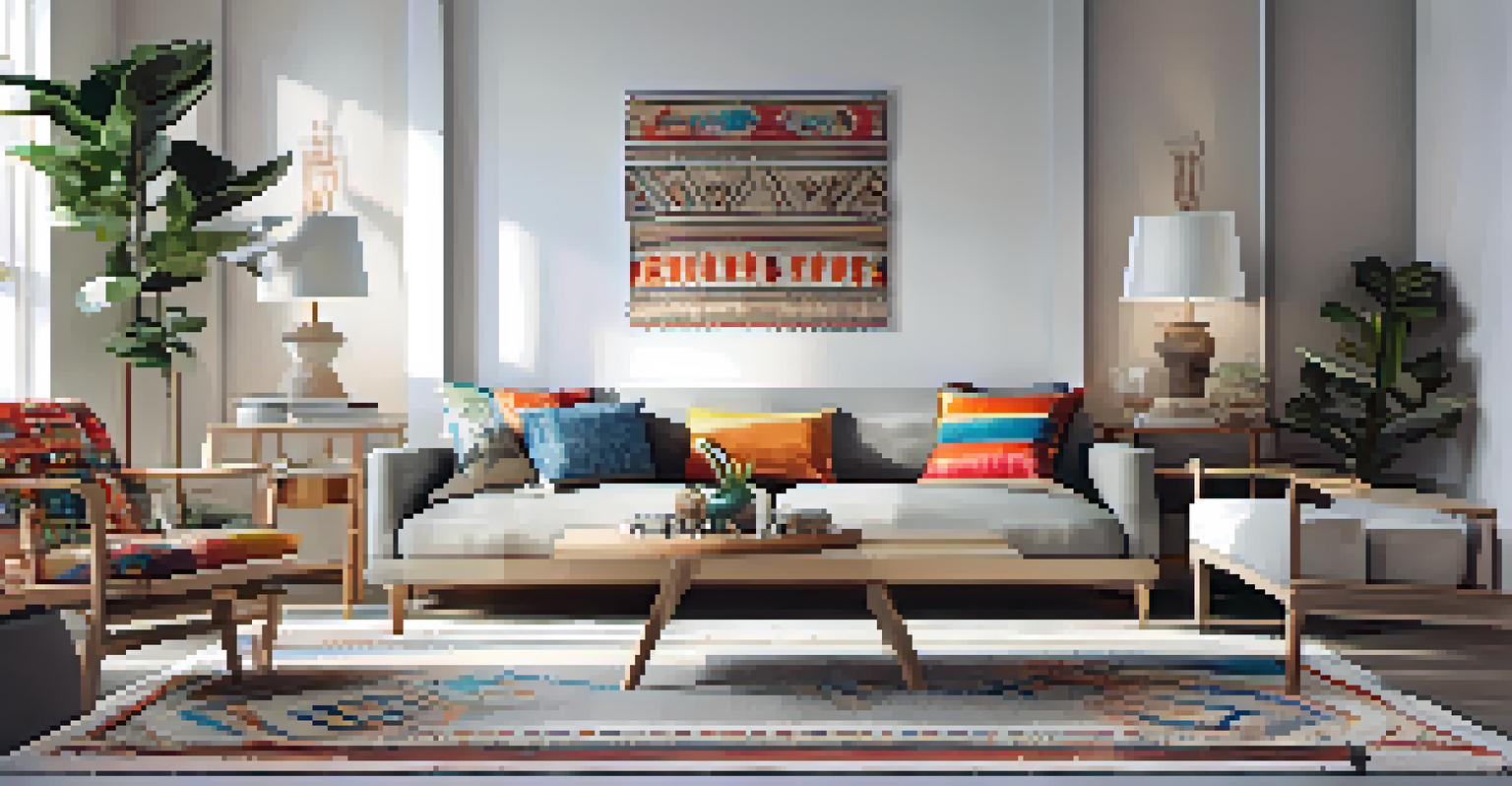The Future of Home Design: Cultural and Global Influences

Cultural Heritage: A Pillar of Modern Home Design
Cultural heritage plays a crucial role in shaping modern home design. Many homeowners are increasingly looking to incorporate elements that reflect their cultural backgrounds, from architectural styles to interior decor. For instance, a Japanese-inspired home might feature sliding doors and tatami mats, creating a serene atmosphere that pays homage to tradition.
Design is not just what it looks like and feels like. Design is how it works.
This blending of old and new not only preserves cultural identity but also enriches the living experience. By integrating traditional craftsmanship with contemporary materials, designers create spaces that tell a story, inviting occupants to connect with their roots. Imagine a sleek, modern kitchen adorned with handmade pottery from a family lineage; it’s this fusion that resonates deeply with many homeowners today.
As we move forward, expect to see an even greater emphasis on cultural influences in home design. Architects and designers will increasingly collaborate with local artisans to create unique spaces that reflect the diverse tapestry of global cultures. This trend not only promotes sustainability but also supports local economies, making it a win-win for everyone involved.
Sustainability: The Guiding Force in Future Homes
Sustainability has moved from a buzzword to a guiding principle in home design. As environmental concerns rise globally, homeowners and designers alike are prioritizing eco-friendly materials and energy-efficient designs. This shift is evident in the increasing popularity of features like solar panels, rainwater harvesting systems, and recycled building materials.

Imagine a home that not only looks good but also minimizes its carbon footprint. Concrete made from recycled materials, bamboo flooring, and energy-efficient appliances are just a few examples of how modern homes can be both stylish and sustainable. By incorporating these elements, homeowners create spaces that are not only visually appealing but also environmentally responsible.
Cultural Heritage in Home Design
Modern home design increasingly integrates cultural heritage, allowing homeowners to reflect their backgrounds through architectural and decor elements.
Looking ahead, the focus on sustainability in home design is expected to intensify. Innovations in technology will lead to smart home systems that optimize energy usage, while biophilic design—integrating nature into our living spaces—will enhance well-being. The future of home design is not just about aesthetics; it’s about creating a harmonious relationship between our homes and the planet.
Technological Integration: Smart Homes on the Rise
As technology continues to advance, our homes are becoming smarter and more interconnected. Smart home devices, from voice-activated assistants to automated lighting systems, are transforming the way we live. These innovations offer convenience and efficiency, allowing homeowners to control their environments with a simple command or click.
The best way to predict the future is to create it.
Consider the ease of adjusting your thermostat from your phone or having your coffee brewed just as you wake up. This level of convenience not only enhances daily life but also promotes energy efficiency, as devices can be programmed to operate at optimal times. The integration of technology into home design is no longer a luxury; it’s becoming a standard expectation.
In the future, we can anticipate even more sophisticated technological advancements in home design. From virtual reality interior design tools to AI-driven spaces that adapt to our needs, the possibilities are endless. As we embrace these innovations, our homes will not only reflect our personalities but also adapt to our lifestyles in unprecedented ways.
Globalization: Blending Styles from Around the World
Globalization is reshaping home design by blending diverse styles and influences. Homeowners are no longer confined to traditional design norms from their regions; rather, they are exploring elements from various cultures. This fusion creates unique living spaces that celebrate diversity and individual expression.
For example, a home might feature Scandinavian minimalism combined with Moroccan textiles, creating a warm yet modern aesthetic. This eclectic approach allows homeowners to personalize their spaces while embracing global influences. It also reflects a broader cultural appreciation, as people become more open to exploring and respecting different traditions.
Emphasis on Sustainability
Sustainability is becoming a core principle in home design, with a focus on eco-friendly materials and energy-efficient features.
As we move into the future, expect to see even more cross-cultural collaborations in home design. Designers will draw inspiration from various parts of the world, leading to innovative spaces that challenge conventional norms. This trend not only makes homes more visually intriguing but also fosters a sense of global community.
Minimalism: The Art of Simplicity in Home Design
Minimalism has gained traction as a guiding philosophy in home design, emphasizing simplicity and functionality. This trend encourages homeowners to declutter their spaces, focusing on quality over quantity. The result is a serene environment that promotes mental well-being and clarity.
Imagine stepping into a home with clean lines, muted colors, and thoughtfully selected furnishings. Each piece serves a purpose, contributing to a harmonious atmosphere that feels both spacious and inviting. This approach not only creates a visually appealing space but also encourages mindfulness regarding our possessions and how we live.
As we look to the future, minimalism will likely continue to evolve, incorporating elements of warmth and comfort. Designers may experiment with textures and natural materials to ensure that minimalist spaces feel inviting rather than sterile. Ultimately, this blend of simplicity and comfort will resonate with homeowners seeking balance in their lives.
Adaptive Reuse: Breathing New Life into Old Spaces
Adaptive reuse is a growing trend that breathes new life into old and underused spaces. Instead of demolishing historic buildings, designers are finding innovative ways to repurpose them. This practice not only preserves cultural heritage but also contributes to sustainability by reducing waste.
Think of an old factory converted into chic loft apartments or a school transformed into a community center. These projects showcase the beauty of blending history with modern functionality, creating unique spaces that honor the past while serving contemporary needs. This approach fosters a sense of community, as these repurposed spaces often become hubs for social interaction.
Personalization of Living Spaces
Future home design will prioritize personalization, enabling homeowners to create spaces that resonate with their individual values and lifestyles.
Looking ahead, the adaptive reuse trend is expected to gain momentum as cities continue to grow and evolve. By reimagining existing structures, we can create vibrant neighborhoods that reflect both history and modernity. This practice not only supports sustainability but also celebrates the stories embedded in our built environment.
Personalization: Making Homes Reflect Individual Values
In the future, personalization will be at the forefront of home design, allowing homeowners to create spaces that resonate with their values and lifestyles. This trend shifts the focus from generic designs to tailored environments that reflect individual stories and preferences. After all, our homes should tell our stories and serve our unique needs.
Imagine a space filled with art that speaks to your experiences or a garden designed for sustainability and self-sufficiency. Personalization can take many forms, from selecting color palettes that evoke certain emotions to incorporating meaningful artifacts from travels. This focus on individual expression transforms homes into sanctuaries of personal significance.

As we embrace this trend, expect to see designers prioritizing collaboration with clients to understand their visions fully. This partnership will lead to innovative and diverse designs that celebrate individuality. In a world where conformity often reigns, personalized home design will pave the way for authentic living experiences.